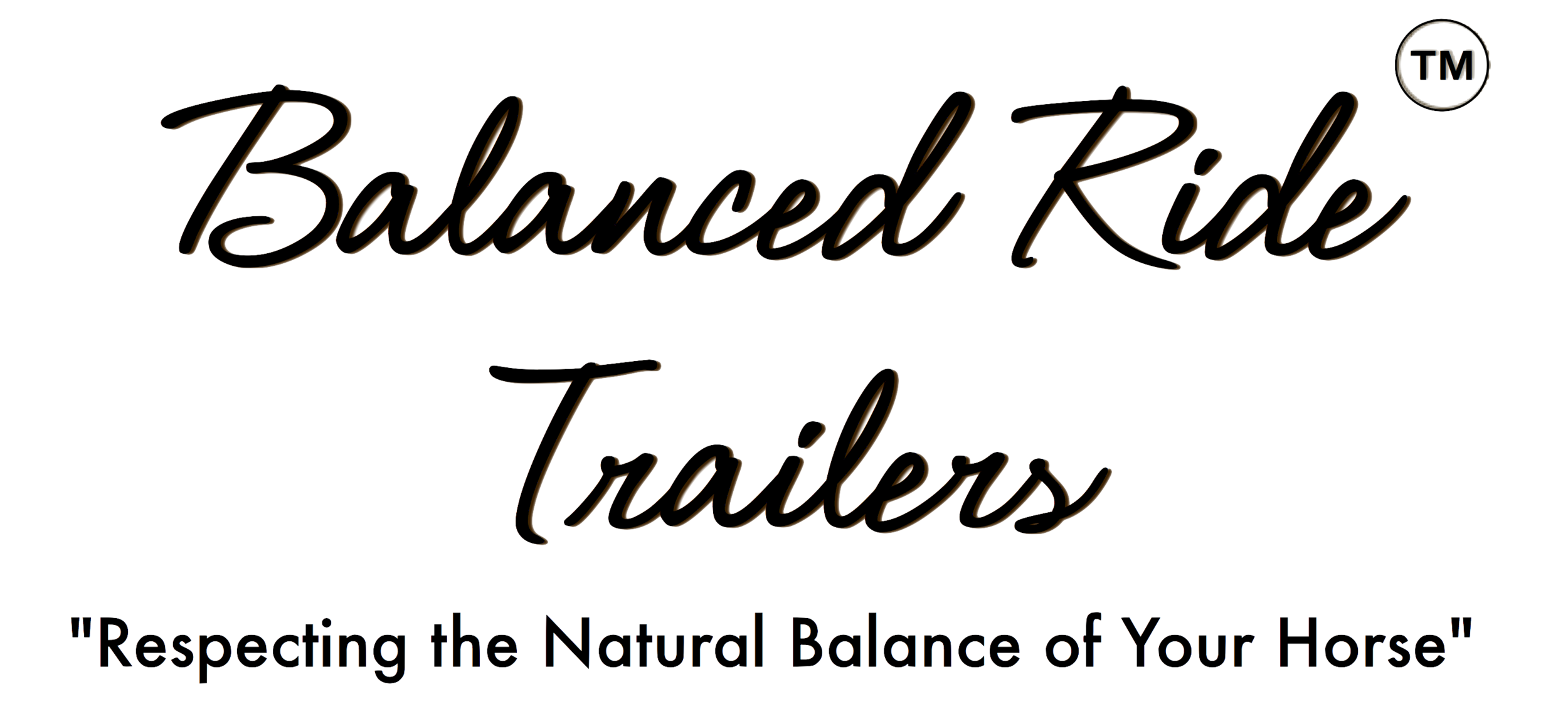Research
All Balanced Ride™ Trailers are designed with the express goals of ease of use, comfort, safety, and minimized stress for your horse. I am happy to discuss the actual research information and benefits of rear facing for you and your horse and of Balanced Ride™ Trailers rear facing designs.
“***van den Berg, J.S. 2001. Effect of transportation on horses. http://bigfive.jl.co.za/transport.htm
van den Berg notes “ little research has been done to determine what could improve the safety of transported horses. Rear facing horses maintained better balance during rough driving conditions. ”
“Leadon, D., N. Waran, C. Herholz, et al. 2008. Veterinary management of horse transport.
Veterinaria Italiana 44:1 illus. 52 refs. pp. 149-163
Leadon cites reports recording lower heart rates in horses traveled facing away from the direction of road travel.”
“Clark, D.K., T.H. Friend, G. Dellmeier. 1993.
The effect of orientation during trailer transport on heart rate, cortisol and balance in horses.
Applied Animal Behavior Science. 21 ref. 38(3/4). pp.179-189.
16 same sex Quarter Horses and QH-crosses were transported about 17 minutes on alternate sides of a trailer, facing fore or back. Heart rate was recorded during and after loading, at the start of the vehicle, during transit and a hard stop. Rear facing horses were better able to maintain their balance. ”
“***Cregier, S. and O. Holmes. 2008. Welfare of horses during transport. In: Proceedings of the International Equine Science Meeting, University of Regensburg, Germany. Illus. 24 ref 8p
Authors describe on-going problems with standard transport, based on designs for dead weight, and attempts to solve or contain them by physical barriers, specialized training, or force. The alternative is balanced transport designed for live weight. “Balanced transport allows the horse complete engagement-disengagement of head and hindquarters and thoracic sling is described.
”
“***Kusunose, R., K. Torikai. 1996. Behavior of untethered horses during vehicle transport. Jl. of Equine Science. 7:2. 6 ref. p. 21-26
12 yearling Thoroughbreds were loaded loose. They were subjected to both normal vehicle speeds and repeated sudden stops. On the road, the horses fed less. While parked, the horses spent more time stationary. During normal travel, the horses increasingly faced away from the direction of travel. The number of direction changes by the horses subjected to the abrupt stop travel, did not significantly change.
Transporting restrained horses with their heads facing away from the direction of travel is recommended.
”
“***Smith, B.L., J.H. Jones, G.P. Carlson, J.R. Pascoe. 1994. Body position and direction preferences in horses during road transport. Equine Veterinary Jl. 10 refs. 26:5, p.374-377.
————. [The same article was also published in the American Jl. of Veterinary Research 55:7, July 1994, pp. 1007-1011].
Thoroughbred geldings transported loose and singly in a 4-horse stock trailer over a 32 km country road were studied in transit and while the trailer was stationary.
The horses spent significantly more time facing away from the direction of travel but not when parked.
”
“***Waran, N., V. Robertson, D. Cuddeford, A. Kokoszko, D. Marlin. 1996. Effects of transporting horses facing either forwards or backwards on their behavior and heart rate. Veterinary Record. 139:1, 10 ref. p. 7-11.
Transported in pairs in a lorry, six Thoroughbreds were transported facing one way on one leg of the journey and the reverse on another leg for a one-hour route. Sampled every minute, heart rates were significantly lower in rear facing horses and they tended to rest their rumps more. In the forward-facing position, the horses shifted more often, held their necks in a higher than normal position and called out more frequently. Backing the horses into the horse van, heart rates were lower. Heart rates during loading and unloading showed no difference in peak or average rate. ”
“***Padalino, Barbara & Raidal, Sharanne. (2020). Effects of Transport Conditions on Behavioural and Physiological Responses of Horses. Animals. 10. 160. 10.3390/ani10010160.
The regulations for minimal space and direction of travel for land transport in horses vary worldwide and there is currently no definitive guidance to promote equine health and welfare. This study evaluated the effects of bay size and direction of travel (forwards/backwards) in horses by comparing the behavioural, physiological, laboratory and gastroscopy parameters between transported and confined horses. A total of twenty-six mares took part in the study; 12 horses were confined for 12 h, and all mares underwent 12 hours’ transportation, travelling in single (n = 18) or wide bays (n = 8), and forward (n = 10) or rear (n = 16) facing. Behavior was recorded during confinement/transportation and analyzed using a behavior sampling ethogram. Clinical examination, blood samples and gastroscopy were conducted before and after confinement/transportation. The frequency of behaviors relating to stress and balance increased during transport, and horses transported in a rear-facing position and in a wider bay size showed fewer balance-related behaviors. Balance behaviors, particularly loss of balance, were positively associated with the severity of gastric ulceration after transportation and elevated muscle enzymes, while increased stress behaviors correlated with decreased gastrointestinal sounds. Heart rate and rectal temperature after transportation were positively associated with balance and stress behaviors, and with squamous gastric ulcer scores. Transportation was associated with expected increases in cortisol and muscle enzymes, but positioning and space allowance had minimal effects on these analytes. Findings suggest that transportation in a rear-facing position and in wider bays might reduce the impact of transport on horse health and welfare, and monitoring behavior in transit and physiological measurements after transportation should be recommended. Behavioral and physiological parameters were more sensitive than hematological, biochemical or endocrine analytes to identify horses suffering from transport stress.”
“Lorem ipsum dolor sit amet, consectetur adipiscing elit. Vestibulum id ligula porta felis euismod semper.”
“Donec id justo non metus auctor commodo ut quis enim. Mauris fringilla dolor vel condimentum imperdiet.”
“Quisque iaculis facilisis lacinia. Mauris euismod pellentesque tellus sit amet mollis.”
“Praesent id libero id metus varius consectetur ac eget diam. Nulla felis nunc, consequat laoreet lacus id.”





